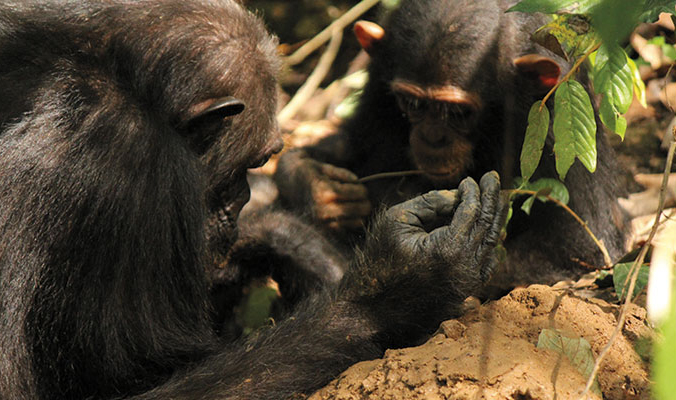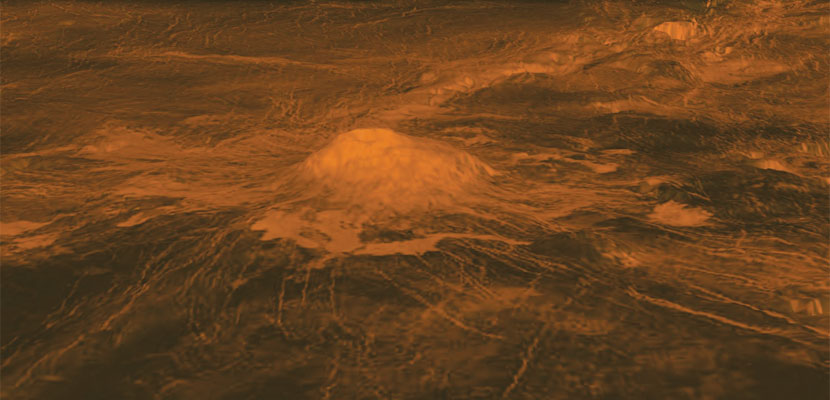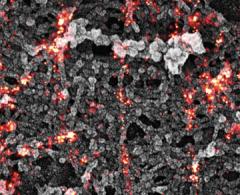
This Article From Issue
March-April 2020
Volume 108, Number 2
Page 76
In this roundup, managing editor Stacey Lutkoski summarizes notable recent developments in scientific research, selected from reports compiled in the free electronic newsletter Sigma Xi SmartBrief.
Proteins Preserve Iron-Age Brain
Neuroscientists may have discovered how a chunk of human brain has remained intact for 2,600 years. Although it is not uncommon to find fossilized human bones dating back thousands of years, this is the only known naturally preserved brain from this period. The organ consists of approximately 80 percent water, and the remaining tissue quickly decomposes under normal circumstances. The dearth of brain specimens means that researchers must rely on skulls to deduce information about our ancestors’ brains. However, in 2008 archaeologists outside of York, England, uncovered an Iron Age human skull containing a yellowish piece of preserved brain with the gyri (folds) intact. New molecular analysis of the brain revealed that two of the proteins that provide structure for the brain were more tightly packed in the ancient specimen than in modern brains. These protein aggregates may be responsible for the brain fragment’s survival. The researchers have not determined what caused the aggregates, but they suspect it may be related to the burial conditions. The discovery of the preserved brain may benefit future biomedical and archaeological work.

Petzold et al., 2020
Petzold, A., et al. Protein aggregate formation permits millennium-old brain preservation. Journal of the Royal Society Interface doi: 10.1098/rsif.2019.0775 (January 8).
Chimps Teach Complex Tasks
The likelihood that a chimpanzee will help its neighbor learn a new skill depends upon the difficulty of the task. An interdisciplinary team of anthropologists, biologists, and psychologists observed two groups of wild chimpanzees gathering termites in the Goualougo Triangle, Republic of Congo, and in Gombe, Tanzania. Both communities use tools for this task, but their methods differ. The Goualougo chimpanzees use multiple tools that they carefully choose and modify, and those tools are used in a specific order. The Gombe chimpanzees use a single tool of indiscriminate material to fish the termites out of their nests. The team observed that the Goualougo chimpanzees were three times more likely to share their tools with others in their community than the Gombe chimpanzees. Sharing tools is a way to help others build skills, and is therefore a form of teaching. The researchers attribute the significant difference in the rates of sharing tools at Goualougo and Gombe to chimpanzees being more willing to help when a task is complex than when it is simple. Understanding how apes teach each other helps researchers understand the evolution of shared culture and technologies in humans.

Courtesy of Chris Walker, North Carolina State University
Musgrave, S., et al. Teaching varies with task complexity in wild chimpanzees. Proceedings of the National Academy of Sciences of the U.S.A. doi: 10.1073/pnas.1907476116 (January 14).
Microbes Digest Microplastics
An innovative method of tracking plastic has led to the discovery that some bacteria can decompose the material. Levels of plastic particles are increasing in waterways worldwide, potentially disrupting aquatic environments. These threads, fragments, and beads under 5 millimeters, known as microplastics, are difficult to track through ecosystems. A team of biologists used carbon isotope labeling to track polyethylene microplastics (the most common type) through clear water and humic water (containing high levels of broken-down organic matter). They found that microbes in the humic water transformed the microplastics into omega-3 and omega-6 fatty acids. The biologists traced the labeled isotopes through bacterial decomposition and into the organisms that consumed the fatty acids, and on up the food chain into the cell membranes of herbivorous zooplankton. Previous studies have shown that high levels of microplastics can inhibit algae and zooplankton growth, but this research suggests that the problem may be mitigated in humic environments.
Taipale, S. J., E. Peltomaa, J. V. K. Kukkonen, M. J. Kainsz, P. Kautonen, and M. Tiirola. Tracing the fate of microplastic carbon in the aquatic food web by compound-specific isotope analysis. Scientific Reports doi: 10.1038/s41598-019-55990-2 (December 27, 2019).
Volcanically Active Venus
Astronomers have known for years that Venus has mountains that look like volcanoes, but now there is evidence that the volcanoes are active. In the early 1990s the Magellan spacecraft took radar images that peered through the thick atmosphere to the surface below, revealing mountains and lava flows, but it was unclear when they were formed. To determine whether the volcanoes are still active, planetary scientists tested how olivine—a common volcanic mineral—would react in a simulated Venusian environment. The olivine quickly transformed into iron oxide. The researchers concluded that mountains and lava flows that have signs of olivine but not of iron oxide are no more than a few years old. Analysis of data from the European Space Agency’s Venus Express, which observed the planet from 2006 to 2014, indicated that there are volcanoes on the planet that meet those conditions, and that therefore Venus is currently volcanically active. These findings are backed up by periodic spikes of sulfur dioxide in the atmosphere, which could also be caused by volcano eruptions.

NASA/JPL-Caltech/ESA
Filiberto, J., D. Trang, and A. H. Treiman, Present-day volcanism on Venus as evidenced from weathering rates of olivine. Science Advances doi: 10.1126/sciadv.aax7445 (January 3).

American Scientist Comments and Discussion
To discuss our articles or comment on them, please share them and tag American Scientist on social media platforms. Here are links to our profiles on Twitter, Facebook, and LinkedIn.
If we re-share your post, we will moderate comments/discussion following our comments policy.